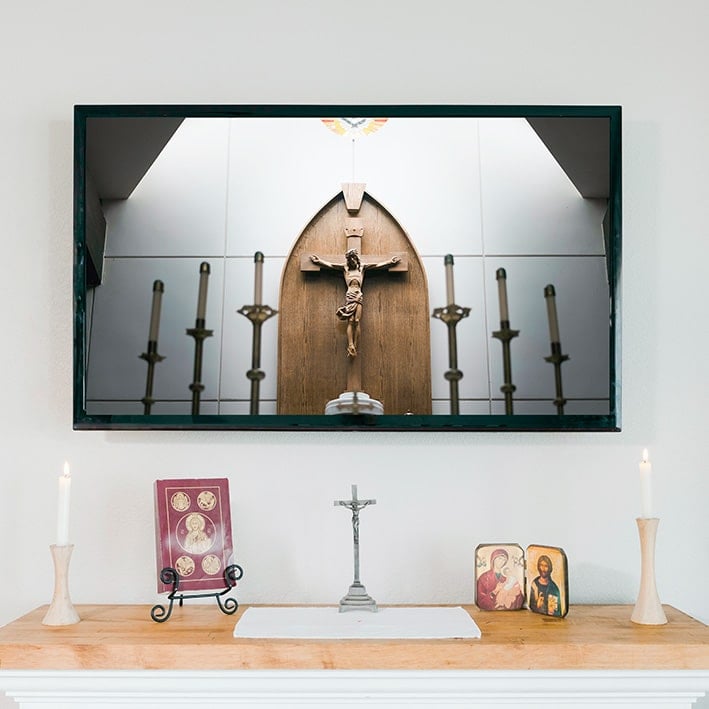
Some of you might remember that back in 2020, I did a study on how Australian Catholics chose to worship during COVID19 church closures. I wanted to bring you up to date on what I’ve done with the data.
If you took part (thank you!), you probably remember answering a lot of questions about how you felt about religion in general. I was testing a particular measure on a Catholic audience, and your answers made up the first article I wrote.
But it’s the other two articles that might be of more interest to you, especially if you took part. One of them was about how your worship choices during COVID19 church closures affected your wellbeing.
We all know from stories and personal experience that it felt hard being cut off from Mass and the sacraments in real life. But could we measure whether it made a real difference to both our everyday and our religious wellbeing?
I used a handy measure called the Spiritual WellBeing Scale (SWBS) that measures both general and religious wellbeing. I looked at people who could go to Mass in real life again, and people who couldn’t (this was about a thousand people in total).
I also looked at whether choosing real-life or virtual worship during COVID19 produced a different impact on your wellbeing.
The first thing I found was that the two groups – Catholics who were still locked out (mostly in Victoria) and Catholics who could go back to Mass in October 2020 – showed almost identical general and religious wellbeing scores.
This is good news! So I dug a bit deeper to try to find what factors were protective of your wellbeing during this time.
I started with the group who were still locked out of Mass. Three things related directly to their religious wellbeing.
These were: being a regular Mass-goer before lockdown, and taking part in real-life AND virtual worship during lockdown. Only age and virtual worship seemed to relate to general everyday wellbeing for this group.
What about the group who could go to Mass again? Their big predictors of religious wellbeing were: being a regular Mass-goer before lockdown, real-life worship during lockdown, and how often you were now going to Mass again after lockdown.
What about ordinary everyday wellbeing? The big predictors here were: age, real-life worship during lockdown, and how often you were going to Mass after lockdown. It’s interesting to see that going to Mass regularly is good for you if you’re a Catholic. It’s also interesting to see that being able to worship in real life during lockdown – and that can include anything from praying in someone else’s house to attending a livestream Mass as technical staff – made a real difference as well.
The last article is a doozy, if I do say so myself. It’s about what factors might affect whether Catholics are coming back to Mass or not after COVID19.
This time, I just looked at the 800 or so people who had access to Mass and the Sacraments again. It turns out that people who were regular Mass-goers before COVID19 were very likely to engage in real-life worship during lockdown (especially younger males).
But it’s what happened next that’s interesting. The two predictors of whether you’d go back to Mass after lockdown were: how often you went to Mass before lockdown, and whether you’d engaged in real-life worship during it.
Virtual worship engagement didn’t predict return to Mass once churches reopened. Only real-life worship did that. In fact, it turns out that if you were a regular Mass-goer, you would return to Mass once churches reopened – but if you’d used real-life worship during church closures, it really boosted the likelihood of you coming back.
Virtual worship also boosted this, but not as strongly as real-life worship.
The take home messages are really clear. People who have formed a strong habit of going to Mass in good times are the ones most likely to remain faithful in and after bad times.
Catholics need real-life worship. Virtual worship is a pale imitation, and only really helps to keep people affiliated to the Church when there is absolutely no other option available.
If our bishops want a future Church in Australia, they need to think hard about how they handle the next pandemic. Catholics need access to real-life worship in order to stay happy and healthy and affiliated.
There are safe ways of doing this. We can prepare now, so that we can switch to these measures and keep as many Catholics at Mass as possible.
Related:
